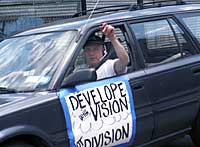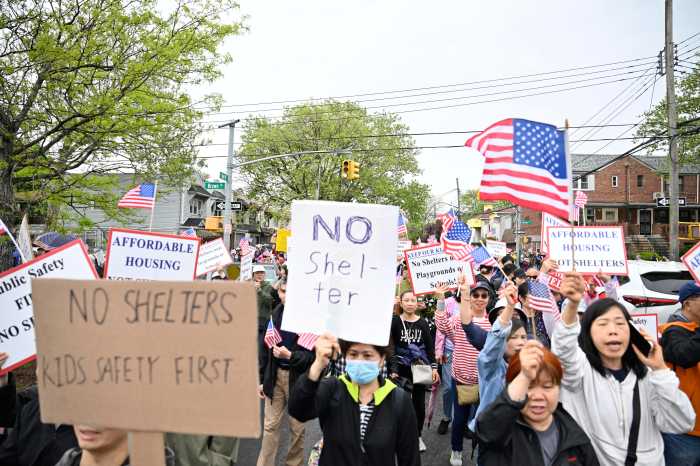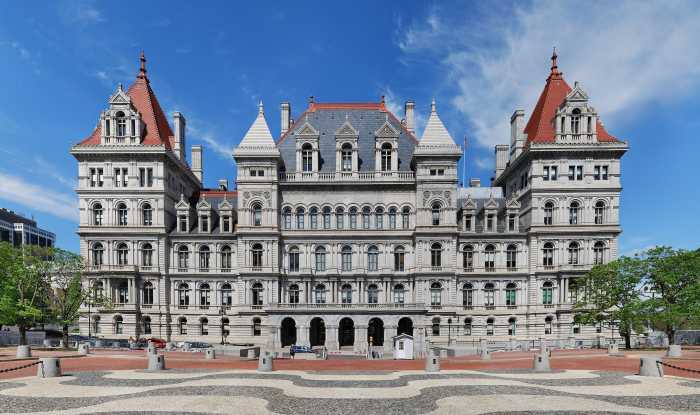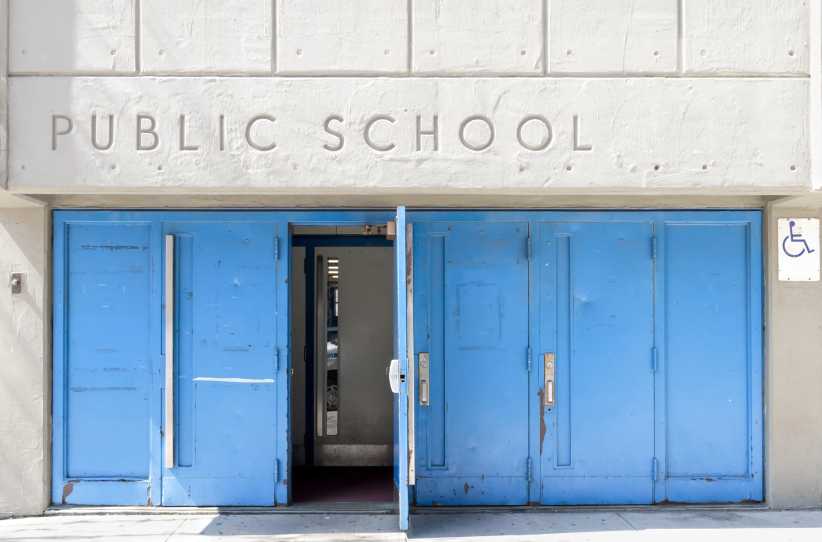A public hearing Wednesday on Ikea’s plan to build a suburban-style
store on the Red Hook waterfront highlighted for the umpteenth time the
bitter rift that has emerged between neighborhood residents seeking jobs
and those who see the community’s demise in the thousands of cars
and trucks the Swedish furniture giant would bring to their streets.
But aside from all the usual bluster, at the June 30 hearing at Borough
Hall, came a call for the home furnishings giant to put its promises to
the community in writing.
Several of the more than 90 people who testified before Borough President
Marty Markowitz voiced doubt that Ikea officials would make good on their
promises of jobs and traffic remediation without a legally binding agreement,
commonly known as a community benefits agreement.
“There’s no question. If you have to accept Ikea then you have
to negotiate an agreement,” said traffic consultant Brian Ketcham,
executive director of Community Consulting Services.
Despite verbal and written commitments by Ikea following Community Board
6’s vote to approve the store’s rezoning application, none have
been legally binding. Board Chairman Jerry Armer said that a list of recommendations
he helped draft were not guaranteed unless City Council members agreed
to adopt them as conditions of their approval of the Ikea application
when it comes before them this fall.
Among those conditions are stipulations that would bar Ikea from opening
until all traffic mitigation measures are put in place. The company has
also agreed to finance traffic studies after the store opens and to pay
for any consequent improvements determined to be needed.
The Swedish home furnishings giant hopes to construct a 346,000-square-foot
store at the former New York Shipyard site between Dwight and Columbia
streets along the Erie Basin.
The plans also include 1,400 parking spaces and more than 70,000 square
feet of additional retail and restaurant space along the waterfront.
While opponents of the plan say the store will draw upwards of 50,000
cars a week to the neighborhood. Ikea officials maintain that on the store’s
busiest days, Saturday and Sunday, they expect 5,000 cars each day.
Ikea officials have shied away from guaranteeing any number of jobs to
Red Hook, or to residents living in the 11231 ZIP code that encompasses
the neighborhood. Instead they have promised to provide job training and
to accept applications from residents living in that ZIP code two weeks
before the hiring process is opened to the general public.
“It’s rather astonishing that Brooklyn’s leaders have not
mounted any of the challenges that Ikea routinely faces, which if it doesn’t
defeat Ikea, it at least earns them more tangible benefits than CB6 has
asked for,” Ketcham said in his testimony before the borough president
Wednesday. “These smart communities negotiate lucrative community
benefits agreements. We give Brooklyn away for free.”
Brad Lander, director of the Pratt Institute Center for Community and
Environmental Development, believes that negotiating a community benefits
agreement between Red Hook and Ikea is still within the realm of possibility.
The former executive director of the Fifth Avenue Committee, a tenants
rights group, did not attend the hearing on Wednesday but told The Brooklyn
Papers that if a large enough faction from the opposing groups came together,
they could still demand a legally binding agreement from Ikea.
Lander said he has discussed the idea with Rep. Nydia Velazquez, whose
district includes Red Hook, and that she was intrigued. Velazquez could
not be reached for comment by press time.
Red Hook Councilwoman Sara Gonzalez has not taken a stance on such an
agreement. But she has already stated her support for Ikea’s plan.
No one from the councilwoman’s office attended the hearing on Wednesday.
Pat Smith, a spokesman for Ikea, said that the company has already committed
to the community board’s recommendations. He said a community benefits
agreement was not feasible, citing the polarization in the neighborhood.





















